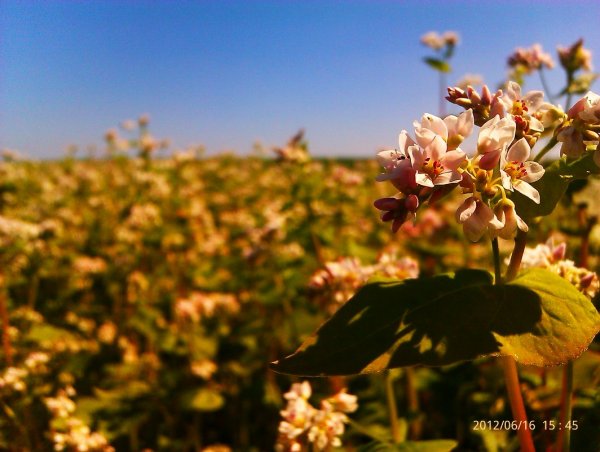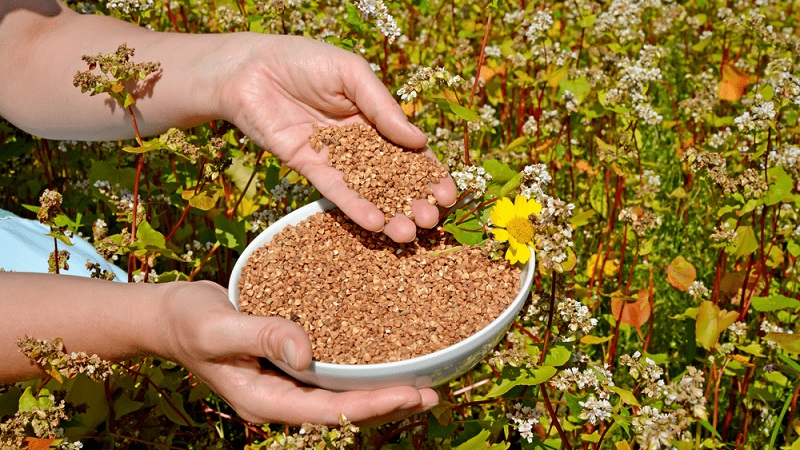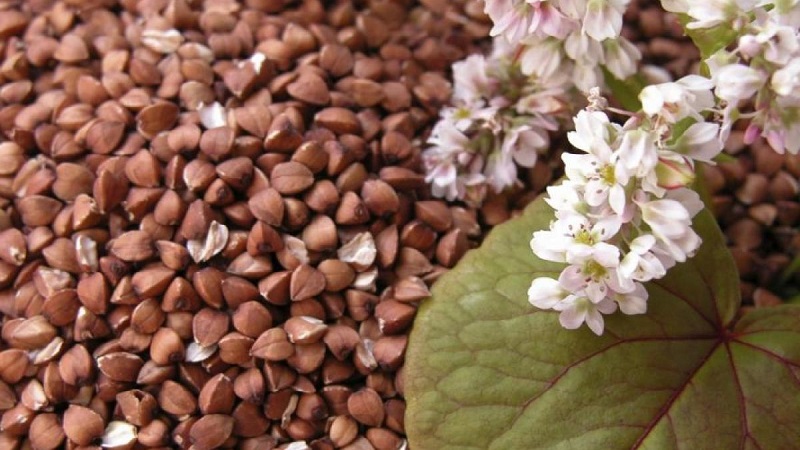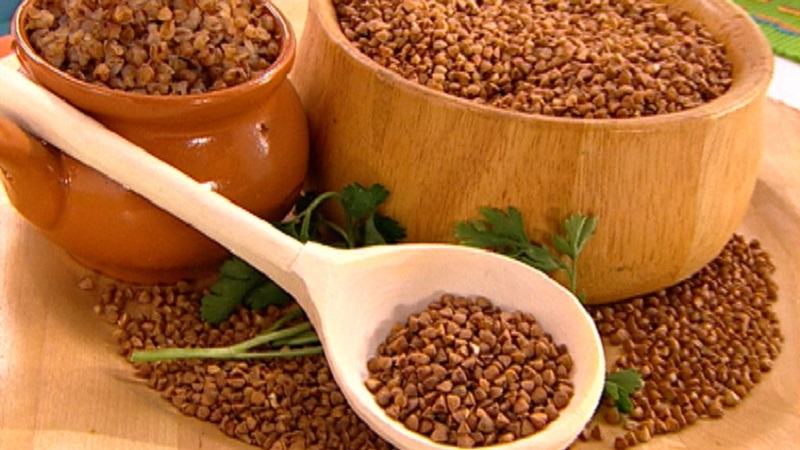In which countries buckwheat is grown and like to eat, and also where the best buckwheat grows
Sowing buckwheat is grown all over the world. In Russia, this culture has a special attitude: in no other country is it so widely used. Buckwheat is loved for its rich taste, rich content of vitamins and minerals. It is one of the best sources of plant-based protein with a high biological value. We will find out where buckwheat is most grown in the world.
The content of the article
World acreage of buckwheat crops
The largest producer on a global scale is Russia, where buckwheat is also a famous dish. According to 2018 figures published by Rosstat, 39.8% of world production cereals falls on the Russian Federation. The general analytics of the world cereal market presented by the experts of the Expert and Analytical Center for Agribusiness "AB-Center" at the end of 2018 is as follows:
- Russia - buckwheat occupies 1,043.7 thousand hectares. Gross harvest - 930.5 thousand tons.In 2019, the area under crops decreased to 806.6 thousand hectares.
- China is the second country in terms of buckwheat cultivation: 404,259 tons of grain.
- Ukraine - 133 thousand tons. Local agricultural enterprises are forced to cut their own agricultural land and sow fields with other plants. The main reason for this is the export of cheap cereals from Russia, which puts the Ukrainian beekeeping industry at risk.
- France - this country has the highest buckwheat yield: 3.5–3.8 t / ha annually.
- Poland - 118,562 thousand hectares were allocated for crops.
- USA - the average yield of buckwheat is 1.3–2 t / ha. In the country, cereals are used to feed livestock and make eco-friendly pillows.
- Brazil - 62,872 thousand hectares.
- Lithuania - 49 922 thousand hectares.
- Japan - 28 800 thousand hectares. Buckwheat is called soba here. The Japanese grow Tatar buckwheat and process it into flour. Buckwheat noodles and sake are made from it. The remaining husk from the seeds is allowed to stuff the pillows.
The annual harvest of buckwheat in the world is about 2 million tons, of which most of it comes from Russia and China. At the same time, the volumes of imported raw materials to other countries change from year to year. The delivery dynamics is influenced by the yield, which depends on weather conditions and applied technologies.
In the photo - buckwheat.

In which countries does buckwheat grow
This cereal is cultivated everywhere. Buckwheat refers to thermophilic and demanding light crops. However, unlike other agricultural crops, it is capable of prolonged growth of shoots, intensive laying of an unlimited number of inflorescences (maintainability) and weed survival. These advantages allow the plant to be cultivated wild in India in risky farming areas.
World leaders
The largest leaders-exporters of buckwheat groats to many countries of the world:
- Russia. The crop yield in 2018 is 10 c / ha from the harvested area, which is 5.3% (0.5 c / ha) more than a year earlier.
- China. Was collected 404,259 tons. This country is fully self-sufficient in the annual stock of the product, serves as the main exporter of cereals to Japan. A more comfortable, mild and warmer climate contributes to a good crop yield. In China, a smaller-fruited variety of buckwheat is widespread - Tatar. It is rich in rutin and quercetin and has medicinal uses.
- Ukraine. Up to 133 thousand tons of buckwheat is harvested from an area of 106 thousand hectares (98%) with a yield of 12.6 c / ha. The country is bigger grows cereals for imports to Kazakhstan than for export sales.
Where is it grown in Russia

The largest buckwheat agricultural lands in Russia are concentrated in the southeast. Where buckwheat grows most in our country:
- Altai region. Here, in 2018, 495.503 thousand hectares of arable land were allocated for buckwheat (47.9% of all buckwheat crops in Russia), in 2019 - 462.056 thousand hectares.
- Republic of Bashkiria - the area occupied by the plant in 2018 amounted to 90.8 thousand hectares (8.6%). A year later, the figure decreased by 37.3% and amounted to 56.931 thousand hectares.
- Oryol Region - 79 thousand hectares in 2018, 52.34 thousand hectares - in 2019.
- Orenburg region - 45.76 thousand hectares in 2018 and 28.644 thousand hectares - in 2019.
- Novosibirsk region - 30.4 and 27.3 thousand hectares, respectively.
In 2019, the indicators of sown areas across the country decreased by 22.2%. Many agricultural enterprises have come to this decision in accordance with the instructions of the authorities. This situation is quite expected due to the decline in the cost of buckwheat in the last 2 years against the background of its overproduction in 2017 and 2018.
Reference. The native land of the plant is considered to be North India, where it is called black rice. The Greeks brought cereals to Russia in the 17th century. This is one of the versions of the origin of its name - buckwheat.
Many farmers have reduced sown areas of buckwheat, having occupied the fields with other, more profitable crops - rapeseed and oats. At the same time, cereals will not disappear from store shelves, but will simply grow in price.
Where the best buckwheat grows

There are several types of buckwheat:
- Sowing buckwheat (Fagopyrum esculentum) - large smooth fruits with clear edges.
- Multifoliate buckwheat (F. multifolium) is cultivated in the Far East and has small wrinkled fruits with little ribbing.
- Tatar buckwheat (F. tataricum) is widespread in India, Thailand, China and Japan as a forage and food crop. From its fruits, cakes are baked, a bitter chocolate paste and herbal tea are made.
The best and most delicious buckwheat is large. Such fruits are usually found in tetraploid varieties. They are characterized by high yields and large grains with a high protein content. Famous tetraploids: Alexandrina, Lena, Elijah and Martha. The main supplier of tasty and large buckwheat is the Altai Territory.
Where buckwheat became a popular dish

Most of all they like cereals in Russia. Boiled buckwheat serves as an excellent side dish for meat, it is used in the preparation of first courses, casseroles, vegetable and cereal cutlets. In Italy and Greece, buckwheat is called Turkish grain, and in France, Portugal, Spain and the United States, it is called Saracen grain. In the opinion of the inhabitants of these countries, buckwheat porridge is worthy only for animal feed, therefore the culture is cultivated to feed pheasants and deer.
Reference. In Western Europe, buckwheat porridge is considered "not a prestigious meal." And in vain, because this cereal replaces the intake of meat for vegetarians and people following a protein-free diet.
Conclusion
For the farmer, cultivation of buckwheat is beneficial for many reasons: the culture is not afraid of weeds, its raw materials are used for the sale of cereals, the production of honey, and use in medicine as a source of routine. Over the past 6 years, agricultural land for buckwheat in Russia has decreased, and yields have increased by 3.3%. This is due to the introduction of new technologies, the cultivation of modern varieties and the prediction of natural and climatic conditions.